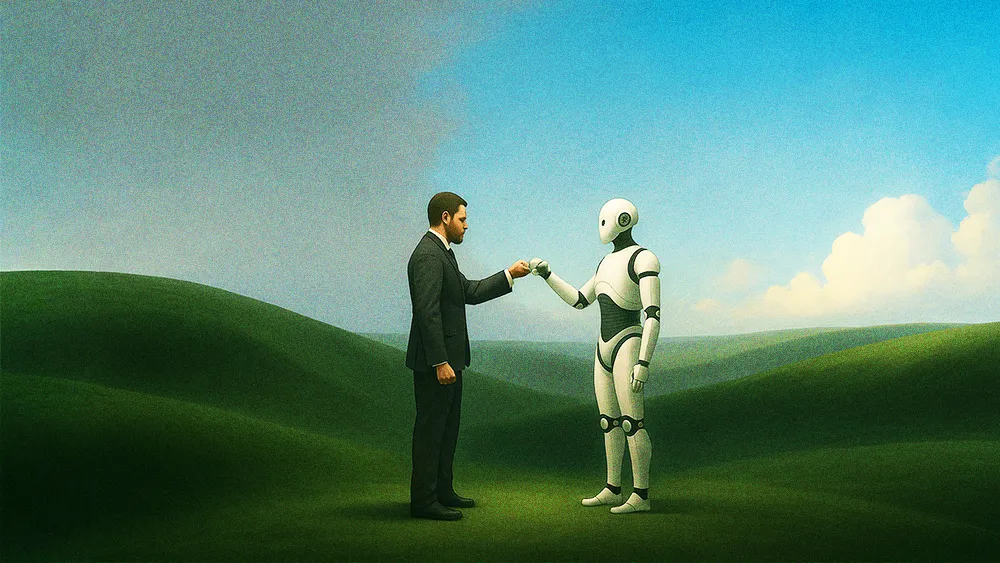
Key Points
- In the race for enterprise AI, a sober understanding of the technology's limits is emerging as the key differentiator, not the power of the models themselves.
- Vimarsh Puneet, Director of Product Management for AI at Cisco, explained that real ROI comes from solving human problems, not just deploying efficient technology.
- Puneet highlighted the gap between raw data and contextual understanding, arguing that AI cannot replicate the nuanced knowledge and trust-building abilities of a human.
- He advocated for a strategic shift where humans focus on ideation and creativity while AI handles execution, transforming AI from a threat into a tool for elevation.
*All opinions expressed in this piece are those of Vimarsh Puneet, and do not necessarily reflect the views of his employer.
The most valuable currency in enterprise AI often is not the technology itself, but a sober understanding of what it can and cannot do. As companies race to automate, optimize, and generate, a simple truth is emerging: the real differentiators will come not from the most powerful models, but from prioritizing the right data, aligning AI with real customer needs, and preserving human context where it matters most. The narrative of replacement is giving way to a more nuanced reality where AI’s greatest promise is in reshaping what humans do best.
We spoke with Vimarsh Puneet, Director of Product Management for AI at Cisco. His perspective is forged by a unique career trajectory that saw him rise from a Senior Software Engineer building the technology to a product leader defining its purpose.
Puneet argued that the industry's obsession with technological capability often misses the fundamental point of business of solving a human problem. The conversation isn't about what AI will replace, but what it will elevate.
A new human purpose: "AI isn't about replacing us," Puneet said. "It's reshaping what humans can do best: empathize, ideate, and build trust." This human-centric view is grounded in a pragmatic assessment of where AI excels and, more importantly, where it fails. For Puneet, the path to unlocking AI’s true value begins with a return to first principles, starting with the one asset that models alone cannot replicate. As we’ve explored previously, many companies are sitting on a goldmine of data without even realizing it.
Data is still the king no matter what. If you have the right data, you can actually produce way better results," Puneet explained. He points to the foundational problem with applying generalist models to specific business challenges.
Data is still king: "The data was not written for the AI to read and learn. It was written for a human who had some back knowledge. A small, disclaimer note might state that a platform is supported, but it was written in a way that the AI would not read it right. A human would know, 'Okay, this is the first sentence I should read, and therefore it is the most important one.'"

This gap between raw data and contextual understanding fuels the central tension in enterprise AI today: the chasm between operational hype and measurable ROI. Puneet shared an anecdote about an airport in India where the automated self-check-in kiosks stood empty while a long line formed for the human-staffed counter. Travelers sensed they could get a better deal via a seat upgrade or waived baggage fee by negotiating with a person. The automated solution was more efficient, but the human one offered more value.
The value test: "In some places, AI can operationalize, but it goes back to the consumer who is hiring that product. Are they getting value out of it or not? If they are, then they would be ready to pay."
This is where the limits of technology become sharpest. In the rush to build agentic workflows that can execute tasks, the industry often overlooks the distinctly human ability to build trust and emotional connection. It’s the difference between a chatbot reciting a script and a sommelier telling the story behind a bottle of wine. One provides information; the other creates an experience.
One-directional emotion: "AI can simulate emotion, but it's only a one-directional emotion," Puneet noted. This superficiality is why he believes we will always gravitate toward authentic human stories, whether it’s a musician who struggled to succeed or a leader who builds a product with a true sense of empathy.
Puneet’s perspective isn’t one of a skeptic, but of a realist who is actively pushing the boundaries himself to find the walls. "I'm trying to replace myself before somebody else replaces me in that loop. I'm able to see where the boundaries are." That personal exploration has led him to a powerful conclusion about where human effort must be redirected in an increasingly automated world. It’s a vision that transforms AI from a threat into a tool for elevation.
"I say that humans need to spend time on ideation, not on building. With every technology advancement, like the industrial age or the internet, there are fears. Before computers everyone was doing math calculations and people would say these computers would replace everybody. But people just went on to do other jobs."
.svg)

.webp)



